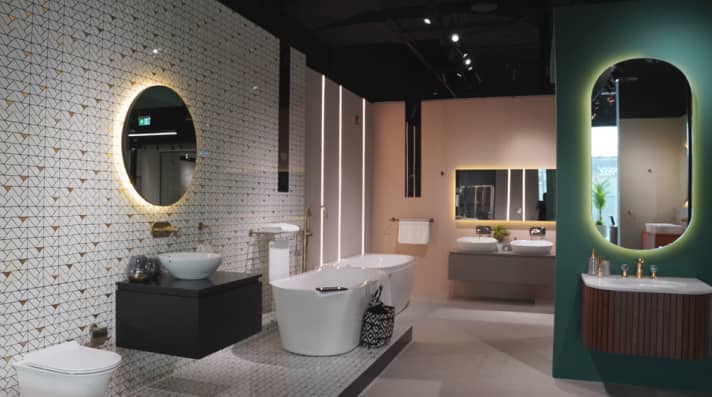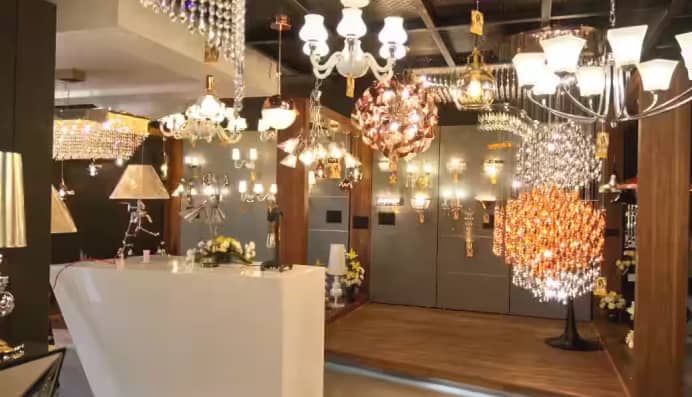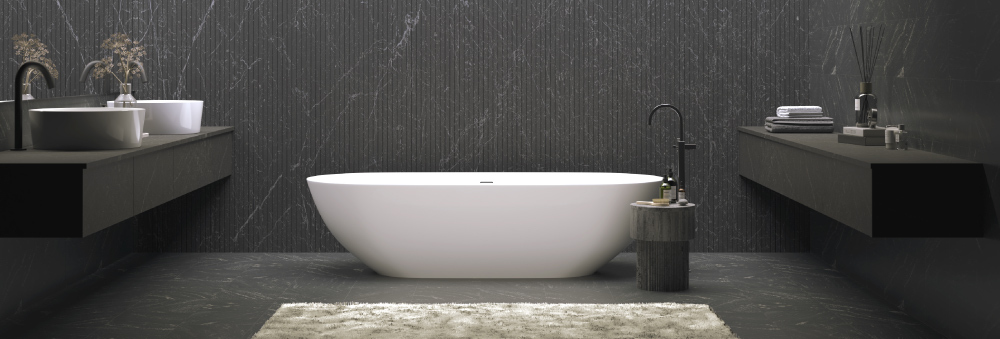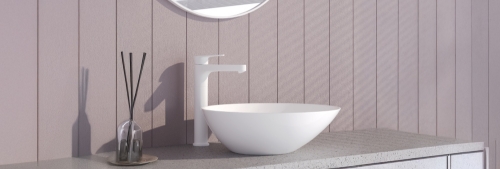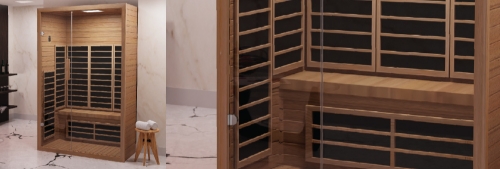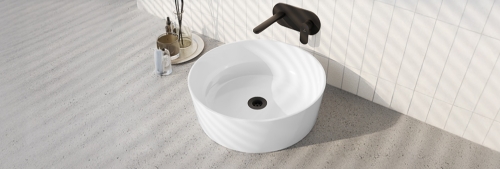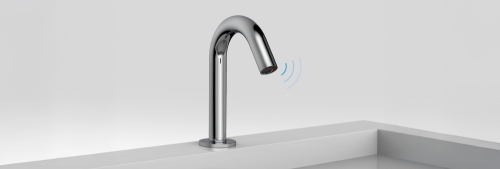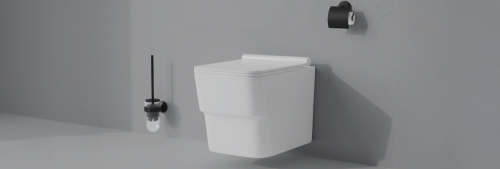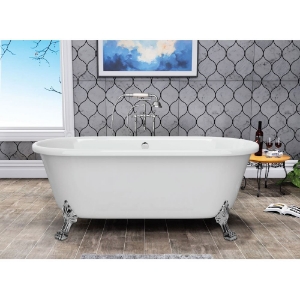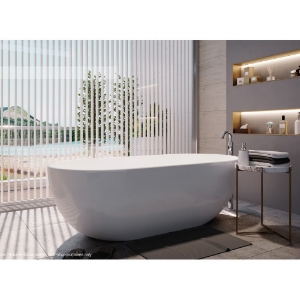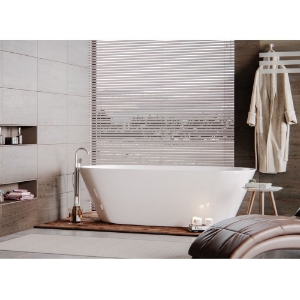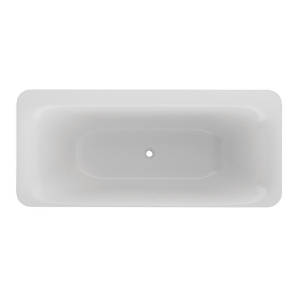A bathtub is more than just a functional fixture—it is the centrepiece of your bathroom and a defining element of your home’s comfort. The right bathtub doesn’t only enhance the aesthetic appeal of your space; it also shapes how you unwind, relax, and rejuvenate after a long day. While styles and designs play a role, it is the size and dimensions of a bathtub that ultimately determine whether it integrates seamlessly into your bathroom and supports your lifestyle needs. Choosing a tub that is too large for the available space can make your bathroom feel cramped, while one that is too small may compromise comfort and functionality.
In South Africa, where bathroom sizes and layouts vary widely, understanding bathtub dimensions becomes even more critical. Factors such as length, width, height, and depth influence not only how comfortable the bath feels but also how well it complements the room’s layout. From freestanding statement pieces to space-saving built-in tubs, the right size ensures a balance between practicality and indulgence. This guide explores the essentials of bathtub dimensions, helping you make an informed choice that enhances both the design and usability of your bathroom.
Let’s explore in this blog, which bathtub matches your preference.
Types of Bathtubs with Size and Dimensions:-
1. Freestanding Bathtubs
The freestanding bathtub is a statement piece in modern bathroom design. It provides an elegant look detached from the architecture of the surrounding space and works in any design scheme, from contemporary minimalist to traditional classic. Freestanding tubs are not attached to any fixed structure, leaving flexibility for installation and a dramatic visual impact that built-in bathtubs cannot achieve.
Jaquar's freestanding bathtubs have been designed with ergonomic forms, construction, and materials to suit everyday use. They are offered in sizes ranging from 1500 mm in length to 1800mm in larger models. They also vary in width but usually run from 700 mm across to 850 mm, allowing the user to lie back comfortably without taking up excessive floor space.
Freestanding bathtubs are better suited for medium to large bathrooms where the tub can be installed without feeling too cramped. When placed properly, freestanding tubs can become the focal point of the room, especially for users who like to enjoy their baths.
2. Built-in Bathtubs
Built-in bathtubs are sometimes called alcove or drop-in tubs. They are built into the bathroom structure and are typically glued or fastened against at least one wall. With the compact nature of built-in tubs, they often become the only bathtub choice for more compact bathrooms or spaces where space is of utmost value.
Jaquar offers built-in tubs that combine beauty with utility. Custom-sized and available in various shapes and designs, built-in tubs can be available in many lengths, typically 1500 mm to 1700 mm, widths, typically 700 mm to 800 mm, and depths, typically 400 mm to 450 mm. A built-in tub with these dimensions provides adequate comfort while creating an easy-to-manage space that connects well to standard bathrooms.
Built-in design should also allow for creativity with custom finishing options, in more than one way. Tiling at the base and custom storage ledges can be added as examples of built-in tub options. Compared to traditional tubs, built-in tubs are versatile and affordable. They can fit into an intimate family bathroom or a guest bath scenario, or be shared with a shower configured as a bath and shower by others.
Key Considerations for Choosing the Right Bathtub Size
While the tub style sets the tone, selecting the correct bathtub dimension is critical to ensuring everyday comfort and flow. Here are the primary factors to consider:
- Bathroom Layout: Take careful measurements of your available floor area. Ensure room around the tub for cleaning, movement and access.
- User Requirements: Who will be using the tub regularly? Taller users may benefit from longer tubs, while children or older adults prefer shallower depths.
- Entry and Access: A lower bathtub height (around 450 mm) is easier to access for households with elderly members or children.
- Orientation and Fixtures: Built-in tubs require wall access for plumbing, while freestanding ones offer more flexibility, but may need floor-mounted taps and extra clearance.
Jaquar’s bathtubs are designed with these needs in mind. They offer options across dimensions and configurations, helping you find a solution tailored to your lifestyle.
Understanding Bathtub Dimensions in Detail
Let’s break down the core aspects of bathtub length and width:
- Length: For most users, a bathtub length of 1600 mm to 1700 mm offers enough reclining space without overwhelming the room. Larger tubs (1800 mm and above) are ideal for those who prioritise soaking space and have ample room.
- Width: Most standard widths fall between 700 mm and 850 mm. Wider tubs provide greater shoulder room and comfort, but must be balanced against available floor space.
- Height: A standard bathtub height ranges from 400 mm to 500 mm. Deeper models allow full-body immersion, while shallower options make entry easier and improve safety.
Assessing these dimensions relative to your available space ensures the tub you choose fits naturally into the bathroom, physically and visually.
Standard Bathtub Sizes: A Complete Comparison
Standard bathtub sizes provide a useful starting point when planning your bathroom design. Most tubs fall between 1500 mm and 1800 mm in length, 700 mm to 850 mm in width, and 400 mm to 500 mm in height. These dimensions are carefully developed to balance comfort, water efficiency, and space utilisation across different bathroom layouts. Smaller tubs, usually around 1500–1600 mm, are ideal for compact bathrooms and households where space is limited but comfort is still essential. Mid-range tubs between 1600–1700 mm remain the most popular, offering sufficient soaking depth and reclining length without overwhelming the room. On the higher end, oversized tubs that reach 1800 mm or beyond create a luxurious, spa-like atmosphere, though they demand a generous floor area and higher water capacity. Understanding these ranges ensures that you choose a model proportionate to your bathroom’s size and your lifestyle needs. Comparing dimensions across tub types—built-in or freestanding—also helps identify whether your preference aligns more with practicality or visual impact. Ultimately, standard sizes act as a benchmark, but considering how each measurement translates into user comfort is the true key to making the right choice.
Typical Standard Dimensions:
Length: 1500 mm – 1800 mm
Width: 700 mm – 850 mm
Height: 400 mm – 500 mm
| Bathtub Type | Length Range (mm) | Width Range (mm) | Height Range (mm) | Best Suited For |
|---|---|---|---|---|
| Small Built-in | 1500 – 1600 | 700 – 750 | 400 – 450 | Compact bathrooms |
| Standard Freestanding | 1600 – 1700 | 750 – 850 | 450 – 500 | Medium bathrooms |
| Large Soaker | 1700 – 1800+ | 800 – 850+ | 450 – 500+ | Luxury/master bathrooms |
Key Takeaways:
Smaller tubs (1500–1600 mm) are practical for family bathrooms or apartments.
Mid-size tubs (1600–1700 mm) provide a balance between space and comfort.
Large tubs (1800 mm and above) offer indulgence but demand spacious layouts.
Always measure the installation area plus clearance zones before finalising your choice.
Bathtub Size vs. Bathroom Size: How to Get the Balance Right
A bathtub must not only fit physically within a bathroom but also complement the overall proportions of the space. Choosing a tub that is too large can restrict movement and make the room feel cluttered, while a tub that is too small may look insignificant, especially in larger interiors. As a rule of thumb, a bathtub should account for about 25–30% of the total floor area to achieve visual balance and functionality. For small bathrooms under 4 square metres, a built-in tub of 1500–1600 mm ensures a snug yet practical fit. Medium-sized bathrooms between 4–6 square metres can accommodate either a freestanding or built-in tub in the 1600–1700 mm range, striking an ideal balance between comfort and available circulation space. In larger bathrooms of 6 square metres or more, a freestanding tub of 1700–1800 mm or greater becomes a statement centrepiece while maintaining accessibility. Clearance is equally critical: leave at least 600 mm of free space at the front and 100–150 mm at the sides for cleaning and movement. By matching bathtub size with bathroom size, you not only enhance comfort but also elevate the room’s aesthetic harmony.
Guidelines for Matching Tub to Space:
Small bathrooms (under 4 sq. m): Built-in tubs between 1500–1600 mm.
Medium bathrooms (4–6 sq. m): Freestanding or built-in tubs between 1600–1700 mm.
Large bathrooms (6+ sq. m): Statement freestanding tubs 1700 mm–1800 mm+.
Practical Tips:
Leave at least 600 mm of clearance in front of the tub for entry/exit.
Allow 100–150 mm around sides for cleaning.
Use wall-to-wall alcoves for built-ins in compact layouts.
Centre freestanding tubs in larger rooms for visual balance.
Pro Insight: A bathtub should account for 25–30% of total bathroom floor area for optimal proportion. This ensures harmony between circulation, storage, and comfort.
Bathtub Depth and Soaking Comfort
While length and width define the footprint of a bathtub, depth is the dimension that directly affects the bathing experience. Standard bathtub depths range from 400 mm to 500 mm, offering a balance between accessibility and soaking comfort. A shallower tub of 350–400 mm is easier to enter and exit, making it suitable for children, elderly users, or bathrooms designed with accessibility in mind. The most common depth, around 400–450 mm, provides everyday comfort for most households, allowing partial immersion without requiring excessive water use. For those who prioritise indulgence and relaxation, deeper tubs exceeding 450 mm create a spa-like environment where the user can enjoy full-body immersion. However, these also require more water per fill, which can increase consumption and heating costs. Depth should be chosen according to lifestyle and user profile—families may prefer safety and convenience, while single professionals or couples may lean toward deeper soaking options. Evaluating depth alongside length and width ensures a bathtub feels both comfortable and practical in daily use. Ultimately, soaking comfort is not just about luxury but about matching the right depth to the needs of the household.
Standard Depth Ranges:
Shallow: 350–400 mm (good for quick showers, kids, elderly).
Medium: 400–450 mm (standard comfort for most adults).
Deep Soakers: 450–500+ mm (full-body immersion, spa-like feel).
Factors to Consider:
Users’ Age & Mobility: Elderly/children may struggle with depths above 450 mm.
Purpose: Relaxation tubs benefit from deeper water levels.
Water Usage: Deeper tubs use significantly more litres per fill.
| Depth (mm) | Comfort Level | Best For |
|---|---|---|
| 350–400 | Easy access | Family bathrooms, kids |
| 400–450 | Balanced comfort | Daily soaking, medium bathrooms |
| 450–500+ | Luxurious soak | Spa-like, relaxation-first setups |
Balancing depth with safety is essential, especially for multi-user homes.
Bathtub Size Customisation: When Standard Options Don’t Fit
Not every bathroom suits standard bathtub sizes, and not every household shares the same bathing needs. This is where customisation becomes invaluable. Custom-sized bathtubs allow you to adapt dimensions for unique layouts, special requirements, or personal comfort preferences. For example, reducing the length to 1400–1450 mm can make a tub workable in extra-small bathrooms where every millimetre counts, while extending the length to 1900 mm or beyond ensures taller users can recline fully without compromise. Width can also be adjusted for narrow bathrooms, preserving depth while maintaining comfort. Beyond space considerations, customisation is particularly helpful for accessibility: a lower height or integrated seating can transform bathing safety for elderly users or those with mobility challenges. While custom bathtubs typically involve higher costs due to specialised moulds and materials, they deliver unmatched satisfaction and alignment with your lifestyle. They also provide design freedom, allowing homeowners to create statement pieces or integrate subtle, compact solutions depending on vision. When standard sizes don’t match your needs, customisation ensures the bathtub fits seamlessly—both in function and in style—creating a truly personalised bathing experience.
Why Customisation Helps:
Odd Layouts: Angled walls or compact corners.
Accessibility Needs: Lower heights or integrated seating.
Design Goals: Oversized statement tubs for luxury interiors.
Examples of Custom Adaptations:
Reducing length to 1400–1450 mm for extra small bathrooms.
Extending length to 1900+ mm for tall users.
Adjusting width for narrow bathrooms while keeping depth intact.
Cost Factor: Customisation usually costs more due to moulding and material adjustments. However, it ensures long-term satisfaction and perfect harmony with your space.
Lifestyle Applications: Matching Size to Daily Habits
When selecting from available types of bathtubs, aligning your choice with your bathing habits ensures long-term satisfaction.
- For Relaxation: If you value extended, immersive baths, a deeper freestanding tub will enhance the experience. These are often favoured in master bathrooms or personal suites.
- For Functionality: In multi-user or smaller spaces, built-in tubs offer daily convenience without taking up unnecessary room. They're well suited for family homes and practical routines.
- For Design Balance: A freestanding tub placed near a window or in the centre of the room acts as a sculptural feature, whereas built-in models create a neat, efficient layout, ideal for bathrooms with limited square footage.
Choosing the Right Bathtub Material
In addition to size and shape, the bathtub material affects comfort and durability. Jaquar’s bathtubs are crafted using high-quality acrylic and composite materials known for their heat retention, smooth surface, and structural integrity.
These materials allow for gentle curves and ergonomic moulding, enhancing the tactile comfort of freestanding bathtubs and built-in bathtubs. Acrylic is lightweight yet durable, easy to clean and resistant to fading, making it a sensible option for long-term bathroom use.
Planning for Installation and Compatibility
Selecting the correct bathtub also involves understanding installation logistics:
- Freestanding Options: They require open space and floor-mounted taps and may involve added plumbing considerations.
- Built-in Options: Support frames or recesses are needed, which often involve integrating side panels or tiling to achieve a polished finish.
Pairing the tub with accessories like wall niches, towel racks and lighting is also essential. Choosing a design that harmonises with these elements ensures a cohesive final look.
Choosing the right bathtub size is a thoughtful balance between comfort, spatial planning and daily use. Whether you lean toward the open elegance of a freestanding bathtub or the efficient charm of a built-in bathtub, understanding dimensions and lifestyle alignment helps you make the most of your space.
Jaquar’s collection combines style and practicality. It is designed for everyday comfort and has a refined bathroom design. From subtle alcove options to statement soakers, there’s a tub to suit every rhythm of life.
FAQs:-
Q.1 What are the standard bathtub sizes and dimensions?
- Most standard tubs range from 1500–1800 mm in length, 700–850 mm in width, and 400–500 mm in height.
Q.2 How do I measure my bathroom space for the right bathtub?
- Measure floor area, wall clearance, and access points, allowing at least 100 mm of clearance on all tub sides.
Q.3 Which bathtub size is best for a small or compact bathroom?
- Built-in tubs between 1500 mm and 1600 mm in length are ideal for saving space while maintaining comfort.
Q.4 What is the ideal depth for a comfortable soaking bathtub?
- A depth of 450 mm or more allows for full-body immersion and a more relaxing bathing experience.
Q.5 Can a freestanding bathtub fit in a medium-sized bathroom?
- Yes, provided the room allows for 200–300 mm clearance around the tub for movement and access.
Q.6 What bathtub length is best for tall people?
A length of 1800 mm or more ensures tall users can recline comfortably.
Q.7 Are there bathtubs under 1500 mm?
Yes, compact tubs (1200–1400 mm) exist but are less common. They are suited for very small bathrooms.
Q.8 How much floor space clearance is required around a freestanding tub?
Ideally 200–300 mm on all sides for accessibility and cleaning.
Q.9 Does bathtub size affect water consumption?
Yes, larger and deeper tubs consume significantly more water per fill compared to compact ones.
Q.10 What is the average bathtub width for comfort?
Around 750–800 mm provides enough shoulder space without being excessive.
Q.11 Which bathtub size is most common in South Africa?
The 1600–1700 mm range is most widely used, balancing comfort and space.
Q.12 How do I know if my floor can support a large tub?
Consult a contractor; typically, standard floors support tubs, but extra-large models may need reinforcement.
Q.13 Can built-in bathtubs be larger than freestanding ones?
Generally, no. Freestanding tubs tend to be larger, though some built-in corner tubs can be quite spacious.
Q.14 What is the best bathtub size for families with kids?
A 1500–1600 mm built-in tub is safe, space-efficient, and practical for children.
Q.15 Are oversized bathtubs difficult to install?
Yes, because of weight, plumbing adjustments, and clearance issues. Plan installation routes in advance.
Q.16 What bathtub size works best in a combined bath-and-shower setup?
A built-in tub around 1600 mm x 700 mm is optimal for shower-bath combinations.
Q.17 How does bathtub size affect heating costs?
Larger tubs require more hot water, which can increase energy bills if used frequently.
Q.18 Can bathtub height be adjusted?
Yes, some models allow frame adjustments or built-in steps to modify access height.
Q.19 Is there a standard clearance between bathtub edge and wall?
A minimum of 100 mm is recommended for cleaning and maintenance access.
Q.20 Do corner bathtubs have different size standards?
Yes, they are often shorter in length (1200–1500 mm) but wider on the diagonal for soaking comfort.
Q.21 What is the smallest comfortable soaking depth?
400 mm is the minimum for a relaxing soak without compromising accessibility.

